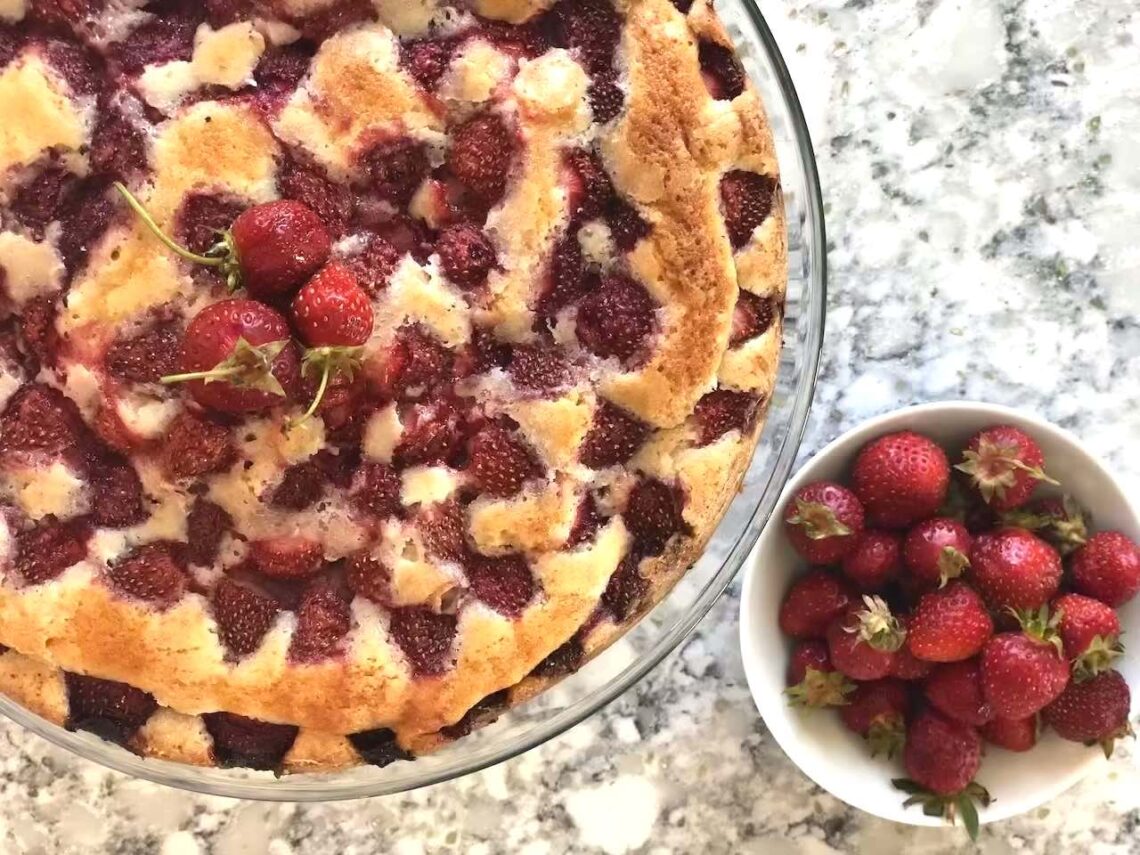
Strawberry Cake
Every summer in Berlin, little huts from Karls Erdbeerhof (Karl’s Strawberry Farm) pop up outside of train stations and sell strawberries by the kilogram. This is my favorite time of year in Germany, where I lived for five years: the days are long, everyone is outside, and the world feels at peace. Plus, there are strawberries – and lots of them. When I first moved to Germany, these luscious and sweet strawberries were a revelation, so different from the perfectly shaped, watery-tasting ones I had grown up eating.
This cake is all about strawberries and, to me, it tastes like summer. It tastes like a picnic at Tempelhof, the former airport turned public park in Berlin, where crowds gather as soon as the weather permits. It tastes like the joy of sitting on the grass for hours, eating and drinking as the sun sets and friends come and go. It tastes like the carefree feeling of summer in Berlin.
As you could probably have guessed, picking strawberries is neither easy nor carefree. It’s difficult work that involves stooping down and squatting for hours at a time. Workers must move quickly and know which berries are ready to be picked, while also being gentle with the berries to avoid bruising them. Pesticides are also a major problem. According to the Environmental Working Group, strawberries are “the fresh produce item most likely to be contaminated with pesticide residues.” This is true even if the strawberries are both rinsed in the field and washed before being eaten. 98 percent of strawberries tested by the federal government had pesticide residue on them. While there is limited data on these pesticides’ effects on workers, there is evidence that pesticides and fumigants can lead to increased risk for cancer, harm child development, and may cause birth defects.
Yet despite everything I’ve just said, strawberry picking doesn’t appear to be any better or worse than other agricultural jobs in the US. (Although some workers avoid strawberry picking because of the stooping.) Agricultural jobs are inherently difficult and no one chooses these jobs if they have other options. We pay workers poverty wages to do back-breaking work under difficult conditions so that we can buy cheap food. As with much of American agriculture, the vast majority of strawberry pickers are seasonal workers, most of them immigrants and many undocumented. (One estimate says that of the 2.5-3 million agricultural workers, 73 percent immigrated to the US and about 60 percent are undocumented.) In the age of Covid-19, workers are unable to socially distance while working, often live in close quarters, and aren’t provided with PPE (such as gloves) at work. Undocumented workers also don’t qualify for unemployment and often don’t have health insurance.
Of course, this exploitation of immigrants for cheap labor is nothing new. In the early twentieth century, Japanese immigrants were the majority of strawberry pickers as well as some of the most experienced strawberry growers. Yet because of the Alien Land laws, most Japanese farmers did not own their farms. Some bought land under their American-born children’s names to avoid these restrictions. Even so, in the 1940s only 30 percent of Japanese strawberry farmers owned their land. Despite these restrictions, by 1941 Japanese-American farmers produced 95 percent of the strawberries in southern California. Japanese immigrants and their American-born children controlled so much of the market that when the US government interned Japanese residents and their Japanese-American children during World War II, the strawberry industry almost collapsed. Production dropped from 27.4 million pounds of strawberries before the war to just 7.5 million pounds in 1944. The strawberry industry recovered, but most Japanese farmers never got their land back.
After World War II, Mexican and Latin American immigrants replaced Japanese workers. Since the 1950s, the strawberry industry has ballooned, with yields increasing from 6 tons per acre in the 1950s to 50 tons today. During this same period, strawberries have been bred to have longer growing seasons, so that Americans now expect to be able to eat them at all times of year. California continues to dominate the strawberry industry, producing 90 percent of US strawberries, which supplies one-third of the world’s supply.
Thanks to these growing practices, American strawberries taste nothing like the sweet, luscious strawberries I loved in Germany. They often seem to have the shadow of sweetness, the shadow of juice, almost but never quite there. Driscoll’s produces a strawberry that looks perfect, can be sold year-round, and tastes… vaguely like a strawberry. During the early summer months, however, you can often find local strawberries at farmer’s markets. Although they are likely more expensive than what you’ll find in a grocery store, they are also usually a lot tastier. Plus, they are less likely to contain pesticides.
To learn more about how strawberries are grown, take a look at both of these New Yorker articles.
Strawberry Cake
Course: Dessert, Recipe8
servings1
hour10
minutesAdapted, very slightly, from Martha Stewart’s Strawberry Cake, via Smitten Kitchen’s Strawberry Summer Cake.
Ingredients
6 tablespoons unsalted butter, softened (plus more for buttering the cake pan)
1½ cups all-purpose flour (plus more for flouring the cake pan)
1½ teaspoons baking powder
½ teaspoon salt
1 cup plus 2 tablespoons of sugar
1 large egg
½ cup milk
1 teaspoon pure vanilla extract
1 pound of strawberries, hulled and halved
Directions
- Preheat the oven to 350 degrees (180 Celsius). Butter and flour a 10-inch cake pan or a 9-inch springform pan.
- Mix the flour, baking powder, and salt together in a medium bowl.
- In another bowl, mix the butter and 1 cup of sugar with an electric mixer for about 3 minutes, until it becomes pale and fluffy. Then add the egg, milk, and vanilla and mix on medium-low until combined.
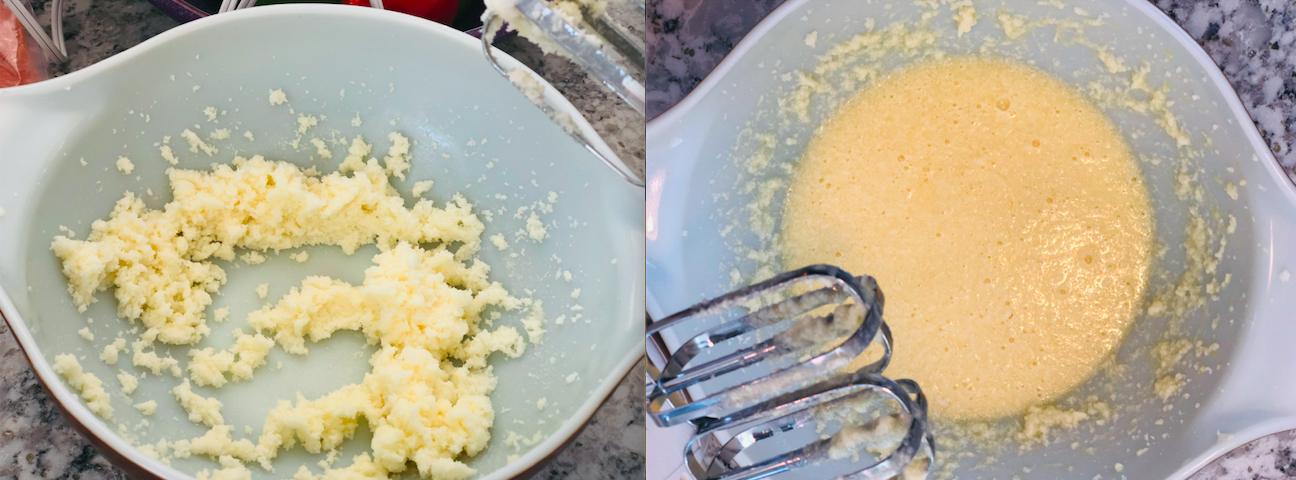
- Gradually add the flour mixture, mixing on low. Mix until fully combined. Pour the batter into the buttered cake pan.
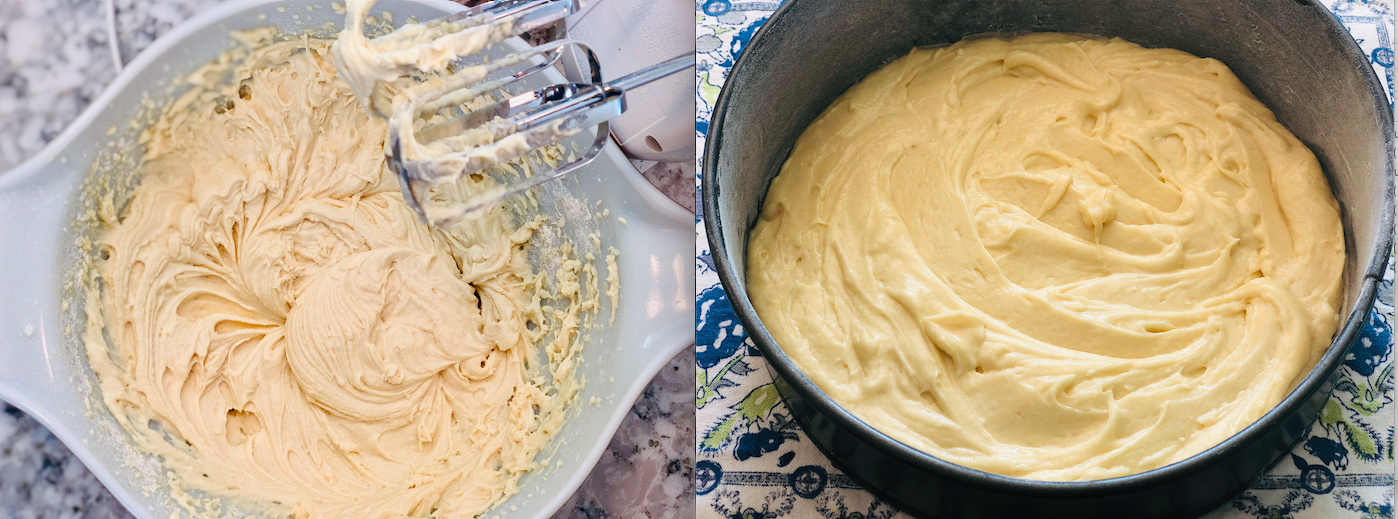
- Arrange the cut strawberries on top of the cake, keeping them as close together as you can. You may have to squeeze them in to fit them all, but it’s worth it.
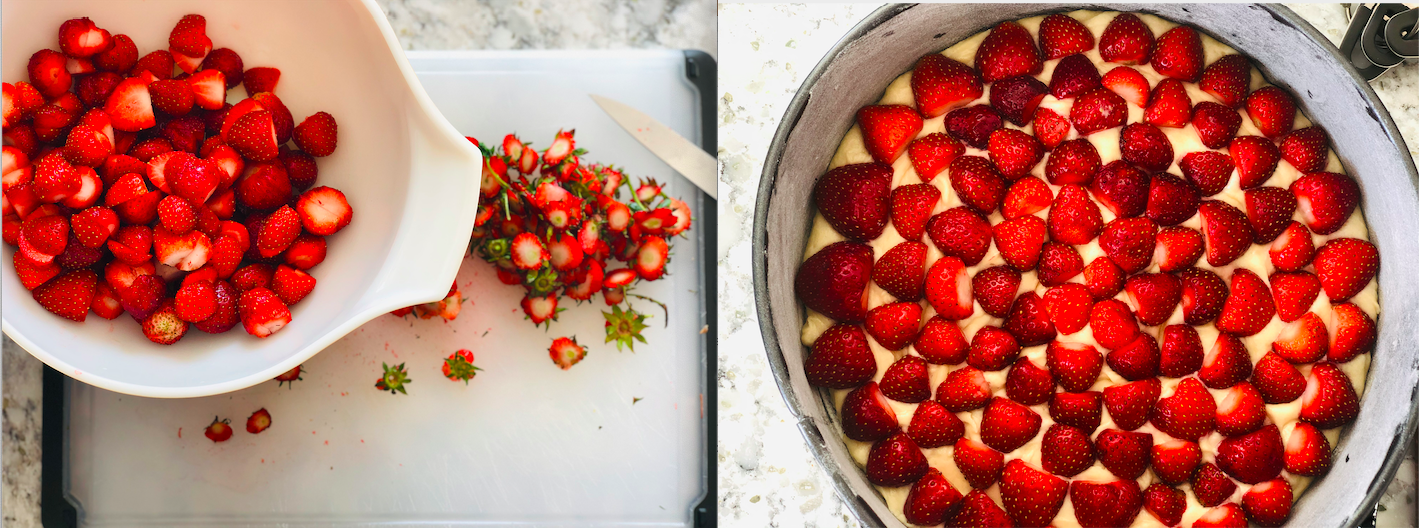
- Sprinkle the last 2 tablespoons of sugar over the strawberries. (Don’t skip this step – it’s what caramelizes the strawberries in the oven.)
- Bake the cake for 10 minutes at 350 degrees (180 Celsius), then reduce the temperature to 325 degrees (160 Celsius) and bake for another 50 minutes. The cake should be golden brown and a toothpick should come out clean (minus the strawberries on it).
- Let the cake cool for ten minutes, then remove from the pan and let it cool on a wire rack. Serve and enjoy!
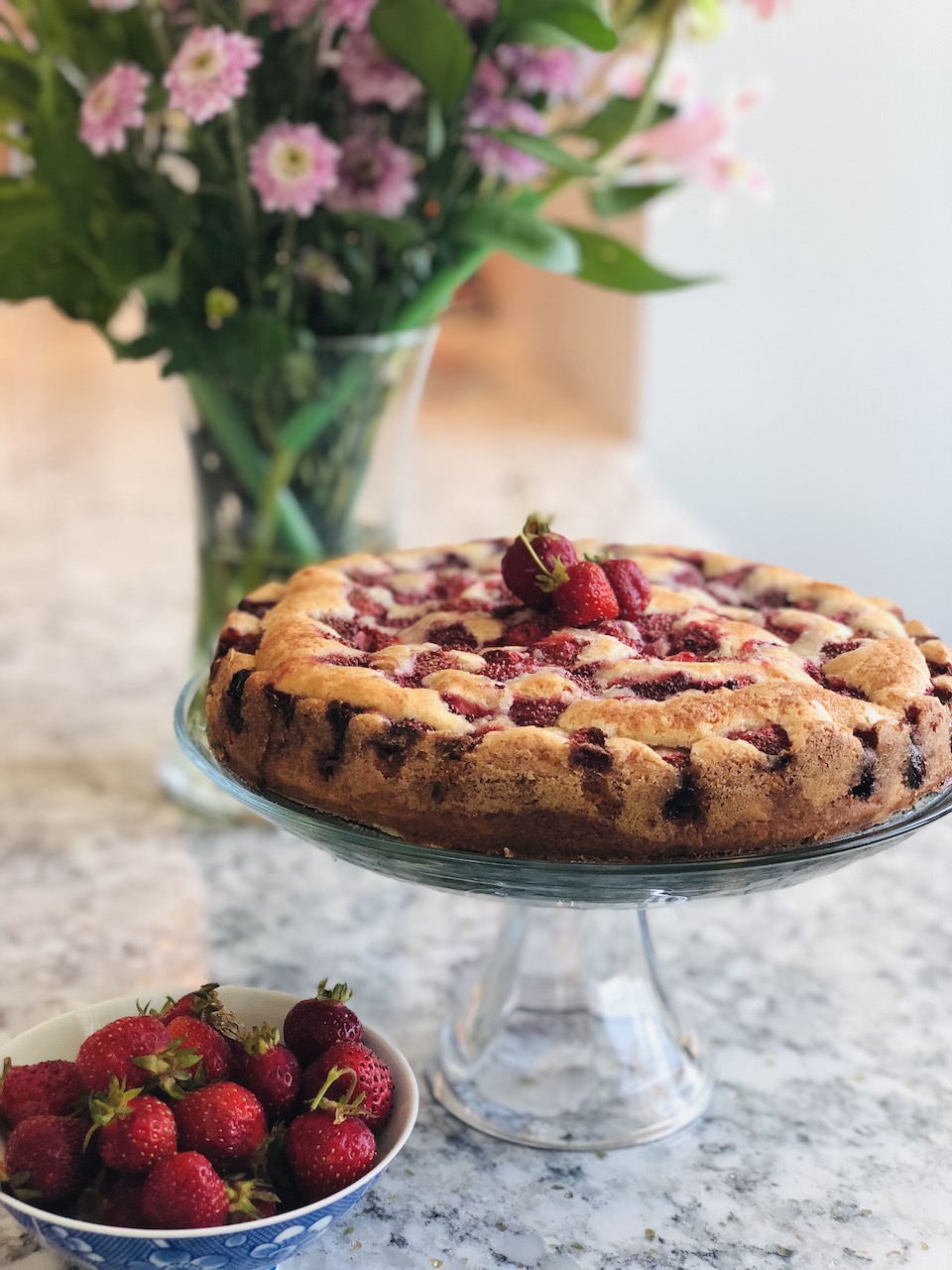


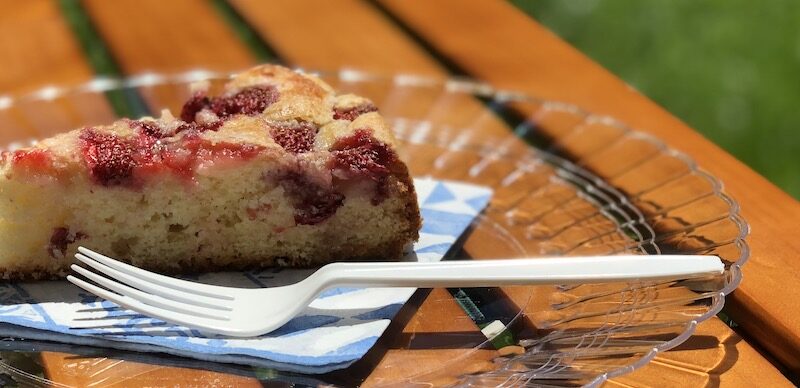
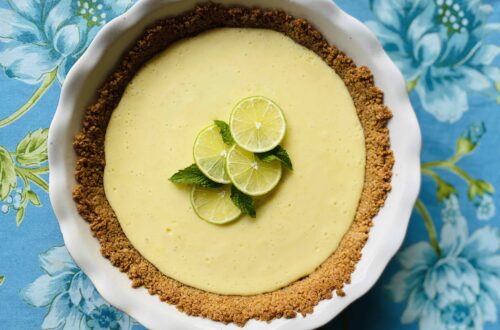
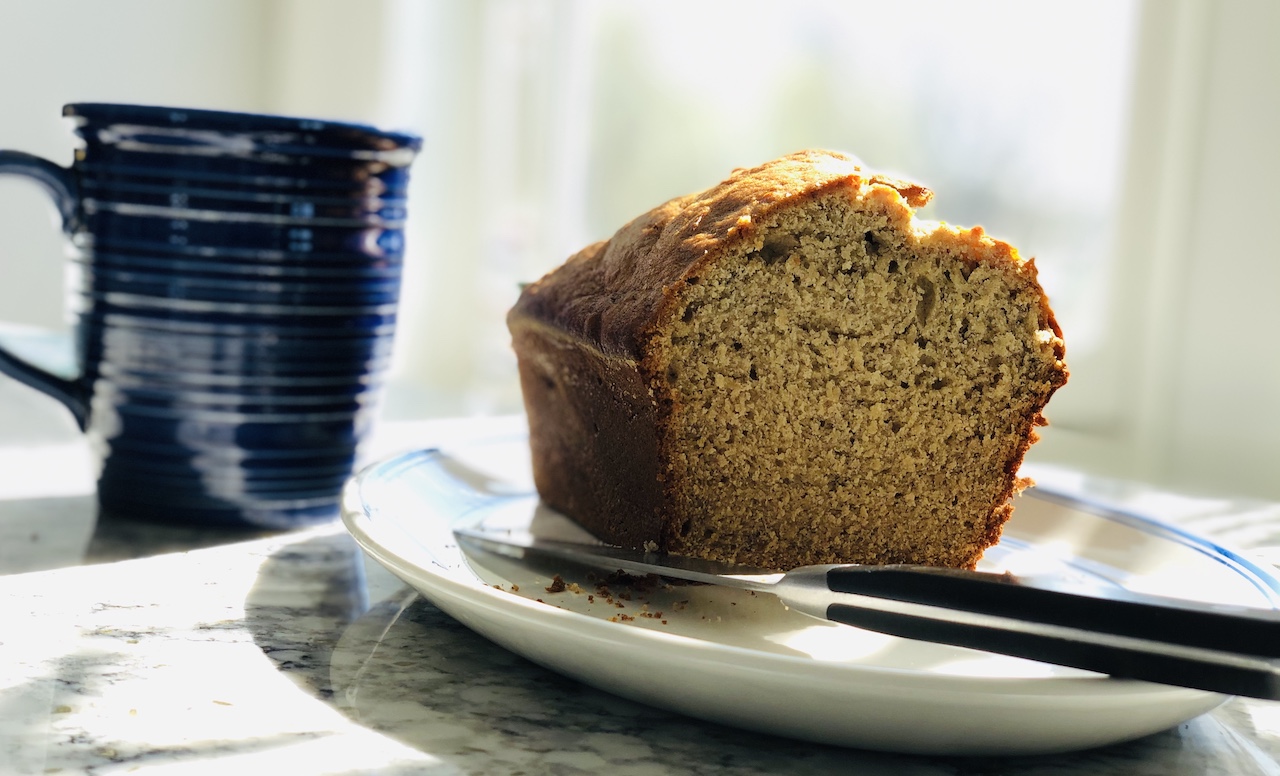
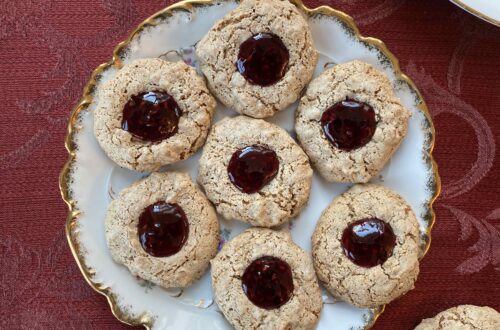
2 Comments
Alice Stevens
Very interesting article. I did not realize the history of Japanese re strawberries in California. I definitely will try the cake. I purchased some local berries that will do the trick!
Bites & Rights
So glad! Enjoy the cake!